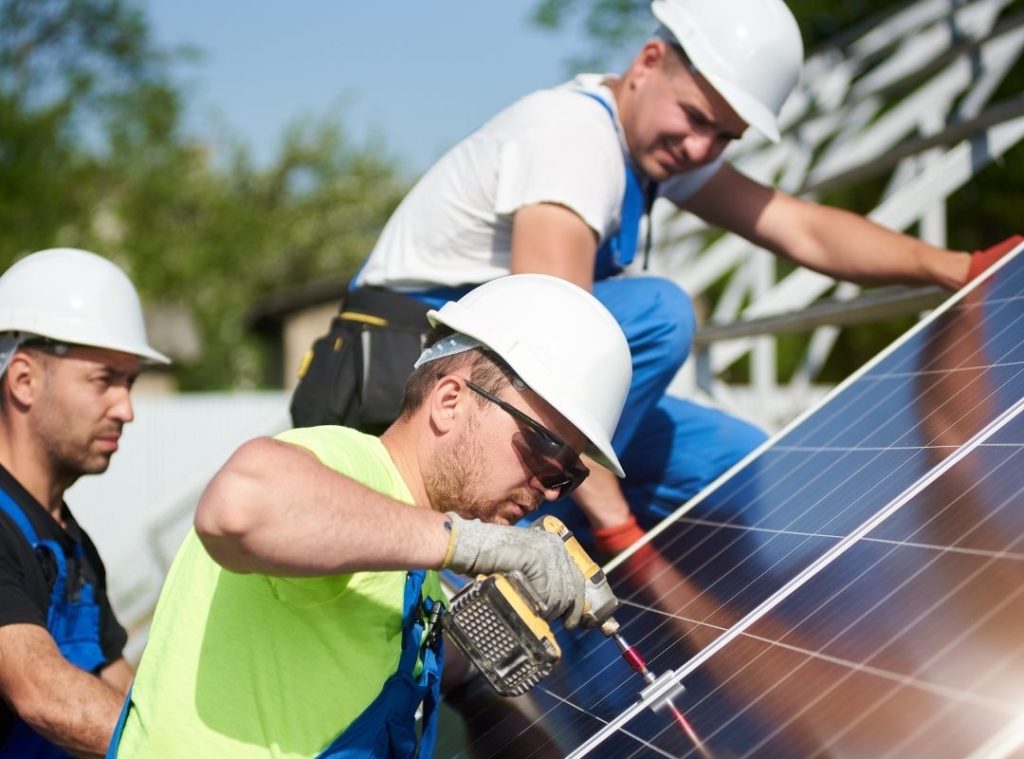With over 300 days of sunshine a year, Phoenix has become a haven for solar energy enthusiasts. The transition to solar roofing systems is not just about being environmentally conscious; it’s a practical decision, offering significant savings in energy bills. However, like all technologies, these systems are not devoid of challenges. Regular maintenance and proactive troubleshooting are paramount to ensuring that you harness the sun’s energy to its fullest potential in the Valley of the Sun.
Common Issues Faced by Solar Roof Owners in Phoenix:
Solar roofing systems, while sustainable and efficient, do come with their set of challenges. In Phoenix, decreased energy production often tops the list. Factors such as the prolonged exposure to intense heat can sometimes reduce panel efficiency. Inverters, which are the heartbeats of solar systems, can also experience technical glitches. Physical damages like cracks or chips in the panels, often from debris or natural wear and tear, can affect performance. Additionally, subtle issues like shading from newly grown trees or accumulated dirt, and wiring mishaps can hinder energy production.
Understanding the Basics of Your Solar Roofing System:
Before diving into troubleshooting, it’s essential to understand the components of your solar roofing system. The solar panels themselves capture the sun’s energy and convert it into direct current (DC) electricity. This DC electricity then travels to the inverter, which transforms it into alternating current (AC) electricity, the kind used in our homes. The wiring facilitates this energy transfer, while the monitoring system keeps track of the energy production, allowing you to spot any discrepancies or drops in power generation.
Step-by-step Troubleshooting Guide
a. Monitoring System Check:
Most modern solar roofing systems come equipped with monitoring platforms. These platforms can notify homeowners of any disruptions in energy production. Regularly checking this system can provide insights into drops in energy production or other potential issues. If there’s a sudden change or drop in your solar energy output, the monitoring system might display alerts or error codes pointing you in the direction of the problem.
b. Visual Inspection:
A simple visual inspection can often unveil a myriad of issues. Start by looking at the solar panels themselves. Are there any visible damages, cracks, or discolorations? In Phoenix’s arid environment, dust accumulation is a common issue. It might be time to give your panels a gentle clean if they appear dusty or have bird droppings. Another critical factor is shading. As the sun’s position changes throughout the year, previously sunlit panels may now be shaded, which can impact their performance.
c. Inverter Check:
The inverter is a vital component, acting as the bridge between the panels and your home’s electrical system. Most inverters will have lights or a display indicating their status. A green light typically means everything’s functioning well, but a red or orange light might indicate a fault. Some inverters also display error messages that can be referenced in the user manual or online to determine the specific issue.
d. Wiring and Connections:
Wires and connections can degrade over time or become compromised. Regularly check to ensure that there’s no visible damage to the wiring, such as fraying or cuts. Additionally, ensure all connections are tight and appropriately grounded. Loose connections can not only decrease system performance but also pose a safety risk.
e. Performance Check
If everything appears fine visually but you still suspect there might be an issue, it’s time for a performance check. Comparing energy production data over weeks or months can reveal patterns. Sudden drops in energy production can indicate panel issues or shading problems. There are tools and apps available that allow you to monitor the performance of each panel individually, pinpointing problematic panels.
Preventive Measures to Avoid Future Issues
While troubleshooting is essential, prevention is always better. In Phoenix’s desert environment, a monthly or bi-monthly cleaning schedule for your panels can prevent dust and debris accumulation. It’s also worth conducting a semi-annual shade analysis. As trees grow or new structures are erected, they can cast shadows over panels, impacting their efficiency. Regular professional inspections, preferably annually, can help identify and mitigate potential issues before they become severe problems.
When to Call a Professional
Not all issues can or should be tackled alone. If you’ve gone through the troubleshooting steps and still can’t identify the problem, or if the problem seems too complex, it’s time to call in the experts. Certified solar technicians have the expertise and tools to diagnose and rectify issues quickly. It’s crucial to rely on a reputable company with a track record of excellent service in the Phoenix area.
Harnessing Phoenix’s abundant sunshine efficiently requires a well-maintained solar roofing system. While minor troubleshooting can often be done by homeowners, remember that solar systems are intricate, and there’s no shame in seeking expert help. If you find yourself in need of professional assistance or simply want to ensure that your system is running optimally, consider reaching out to Advosy Energy. With a reputation for excellence and deep expertise in solar systems, they are Phoenix’s go-to experts for all things solar.
By investing a little time in maintenance and staying proactive with troubleshooting, you can ensure that your solar roofing system serves you effectively for years to come. The sun isn’t going anywhere, and with the right care, neither is your solar system’s efficiency.

